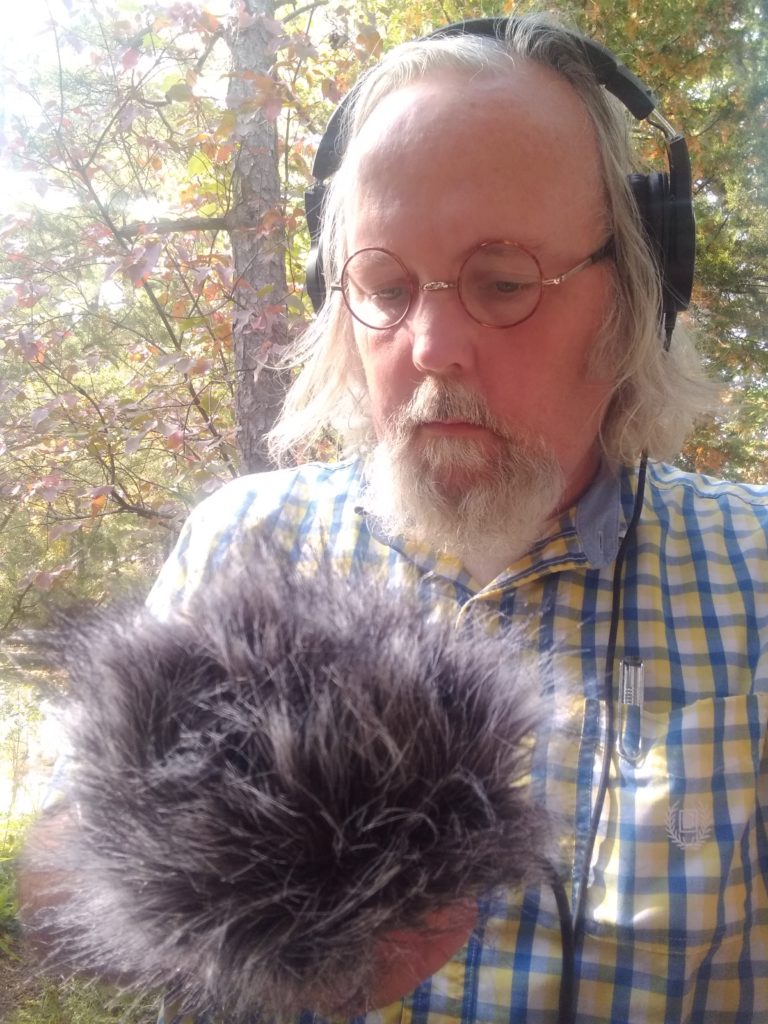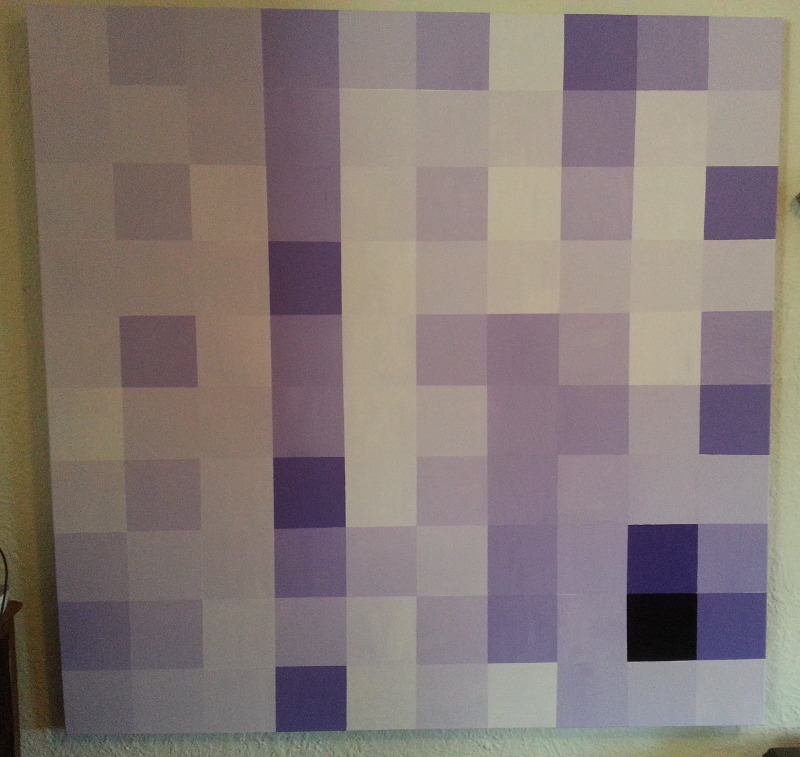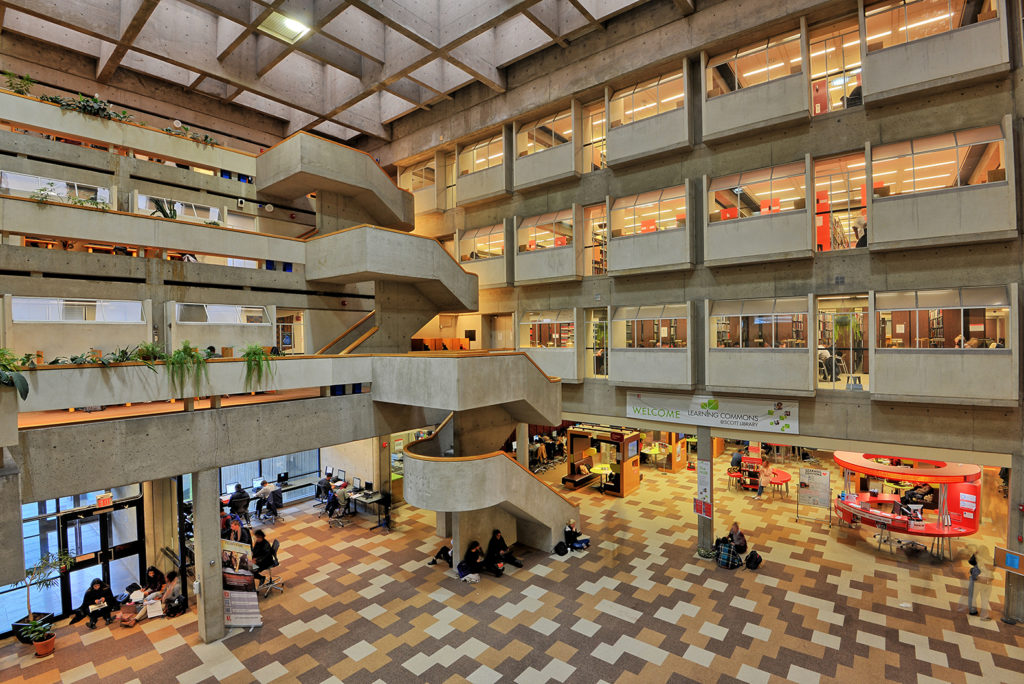York U librarian William Denton has a double life. He’s also a sound artist who’s been busy capturing the noises (or lack thereof) during the pandemic, providing a unique and valuable contribution to our understanding of this unparalleled situation.
“Everything we do is music.” – John Cage
When COVID-19 swept across the globe last spring the world went silent in a way that we – meaning, all of humanity – hadn’t experienced since before the Industrial Revolution. Sound artists around the world began trying to capture the unsettling quiet, alongside the more delicate and unexpected sounds that emerged to fill the void – birds chirping raucously, waves lapping against unpeopled shorelines, a symphony of frogs croaking.

William Denton, scholarly analytics librarian at York University and sound artist, embraced this challenge. Last spring, he picked up his recorder to capture the sounds of COVID-19. His work adds a weighty and enduring reflection on the pandemic.
He sits down with "Brainstorm" to discuss the art of sound-hunting in this environment.
Q: When did you start recording soundscapes?
A: It was six or seven years ago at the family cottage. There are lots of things to hear in this setting – the winds, the waves, the rain on a wooden roof. I thought it would be nice to have this recording, so that when I was back in Toronto in winter, all cold and dark, I could remember what the summer was like.
I had a voice recorder but switched to a Zoom H5 recorder for achieving better quality of sound. This little device is portable, so I started taking it with me – to Ottawa, for example – to remember what those places sounded like.
Q: What did you seek to achieve when recording the pandemic?
A: Staying calm and looking after my own mental and physical health was the goal. Going out for walks. That weekend, after March 17 when everything got very serious in Toronto, and the University closed, I thought well, I can’t stay sitting in my apartment, I’ve got to get out.
I have a GPS-based app on my phone where I can track my route. Over the next three months, I walked all the streets, lanes and alleys from Eglinton and Oakwood, in the north-west, to Yonge and Davenport in the south-east.
I used to listen to music or podcasts when I went for walks, but now I wanted to have maximum awareness of what was going on around me, so I left my earbuds at home. I was struck by how quiet the city was – no cars, no planes, no kids playing outside. The birds seemed louder, although they weren’t.
In the online community of sound recorders, there was this sense that people who do field recordings should be acting now, documenting what was happening. I put my recordings up in one of those, the Aporee Sound Maps “Soundscapes in the Pandemic” project.
Q: What statement are you making with your pandemic soundscapes?
A: Despite the horribleness of the pandemic, we got a sense of what our world could be like in the future if we were able to rebuild things in a better way. With fewer internal combustion engines, maybe we could make a quieter city in the future. Documenting the pandemic sounds makes an historical record we can use for comparative purposes.
In 2021, in March or April, I plan to go back to those places where I recorded the pandemic to chronicle again, street by street, and compare the two soundscapes. It will be noisier and, hopefully, back to something like normal, but we need to try to make it a better normal.
Q: You’ve also recorded the sounds of the York University Libraries. Could you describe the connection between your two careers as a sound artist and a librarian?

A: They do connect. I’ve been turning the data the Libraries generate, the books that the Libraries collect, the classification schemes, and so on into art: I developed a system, a new way of visualizing the Libraries’ collection – it’s called a dentograph. It’s a computer-generated image that shows you, at a glance, the collection.
I’ve also painted the dentographs. It’s interesting to transform one medium into another. The process of painting gives rise to new ideas.
Q: Tell us about your sonification of the reference desk.
A: Sonification is where you take data and turn it into sound. A classic example of this is a Geiger counter: If there’s no radiation, there’s no sound. I wanted to do this for the desks at the libraries, so anyone could listen to it in the background and have an ambient awareness of how busy things are.

Q: How does it work?
A: Whenever someone comes to a desk in the York University Libraries, to ask a question or consult with us, we add information about their visit (such as date, time and length of interaction) to a database.
I developed an algorithm, using a program called Sonic Pi, to turn that data into sounds. Each library and type of question, could be associated with different sounds, timbres and octaves. Then Sonic Pi turns it into sound and music. Anyone can listen along at https://staplr.org/.
Q: How does York inspire innovative thinking?
A: I don’t have a lab or need a grant, so I’m not doing this work in a conventional research stream. But at York, we have a great deal of freedom in our research interests, and that’s what made this possible.
I don’t think I’d be doing any of this if I weren’t at York. The University and the Libraries have facilitated my work. Being in this environment has opened up all kinds of new things, interesting possibilities, for me.
To read an article on Denton in The Star, visit the website. Visit Denton’s website as well for more. To read a paper on dentographics, go here. To read a presentation Denton did about the dentographs, go here.
To learn more about Research & Innovation at York, follow us at @YUResearch; watch our new animated video, which profiles current research strengths and areas of opportunity, such as Artificial Intelligence and Indigenous futurities; and see the snapshot infographic, a glimpse of the year’s successes.
By Megan Mueller, senior manager, Research Communications, Office of the Vice-President Research & Innovation, York University, muellerm@yorku.ca
